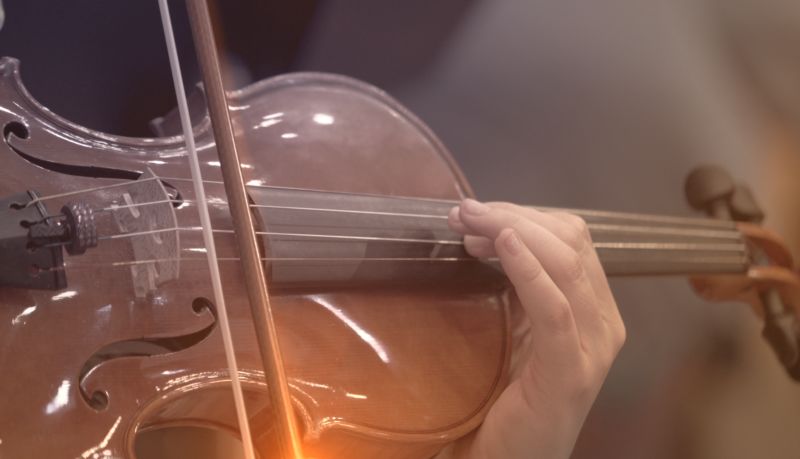
It is useful to pay attention to the "square" formed by the right arm and bow, keeping it in a flat plane, and noticing which parts "lead" in string-crossing motions. Like any other unwarranted tension, it limits freedom of motion, and increases the risk of discomfort, while decreasing sound quality. Raising either shoulder beyond a natural relaxed position is an easy habit to acquire without noticing it. Players may sometimes be advised to bring their left elbow to where they can see it, so as to reach the lower strings more easily. The left forearm will be rather extremely supinated, and the left elbow drawn medially, or to the right. Collapsing the wrist to "support" the violin with the heel of the hand is an unfortunate habit that many novice players fall into, and may take years of constant vigilance to overcome. Keeping the left wrist relaxed and nearly "straight" allows freedom of finger motion, and reduces the chance of repetitive strain injury. The spot may be aggravated by an allergic reaction to nickel plating on the chinrest clamp hardware, or by microbial pathogens present on the instrument.

Many violinists have a reddish mark on the neck, the so-called "violin hickey" (or "fiddler's hickey") from long-term pressure at that spot. Whatever the equipment, the player will usually aim to maintain a balanced, natural, and comfortable attitude, with the spine straight, especially the neck. The search for the ideal combination can be a lengthy one in some cases. The chinrest and shoulder rest accessories come in a great variety of styles and shapes, so each individual may find the combination that best suits their build and playing style. In Morocco the violin is often held completely upright resting on the seated player's thigh with the left hand stabilizing the balance while fingering.

Other common ways to hold the instrument include the seated Carnatic attitude, with the scroll resting on a foot, or the dancing-master's " kit" or " pochette" hold, along the forearm, by the lower margin of the rib cage, even though these are not widely traditional holds. If held properly under the chin, the violinist can let go of the instrument with their hands and it will stay there firmly. Most players hold the lower bout of the instrument between the left shoulder and the jaw, often assisted by a semi-permanently attached chinrest and detachable shoulder rest.
USING ACTION STRINGS CODE
In the template, we are going to select the Empty MVC controller as shown below.Īfter creating the controller, here is a code snippet of it.It is possible to play the violin holding it in a variety of ways. To add controller, right-click on the Controller folder, select Add from the list, and inside that select controller.Īfter selecting the controller, a new dialog will popup with the name Add Controller in that give name as " MyHomeController". Adding New Controller (MyHomeController) in Application Now we will create a Controller with the Name MyHomeController. From Templates, select Visual C# à inside that select Web and then project type select ASP.NET MVC 4 Web Application, and here we are giving the name as “ Tutorial9_Querystring” then finally click on ok button.Īfter naming it, click on OK now new dialog will pop up for selecting a template in that Select Basic template, view engine as Razor, and click ok like as shown below.Īfter that, visual studio will create a new project for us based on our configuration that will be like as shown below.

We will learn query strings with a simple example for that Open visual studio à Go to File à Select New à Select Project.Īfter that, you will see a new dialog for selecting your Template and Project type. Query strings without Optional Parameters In asp.net mvc we can pass query string with Optional Parameter and also without Optional Parameter. Public static void RegisterRoutes( RouteCollection routes)


 0 kommentar(er)
0 kommentar(er)
